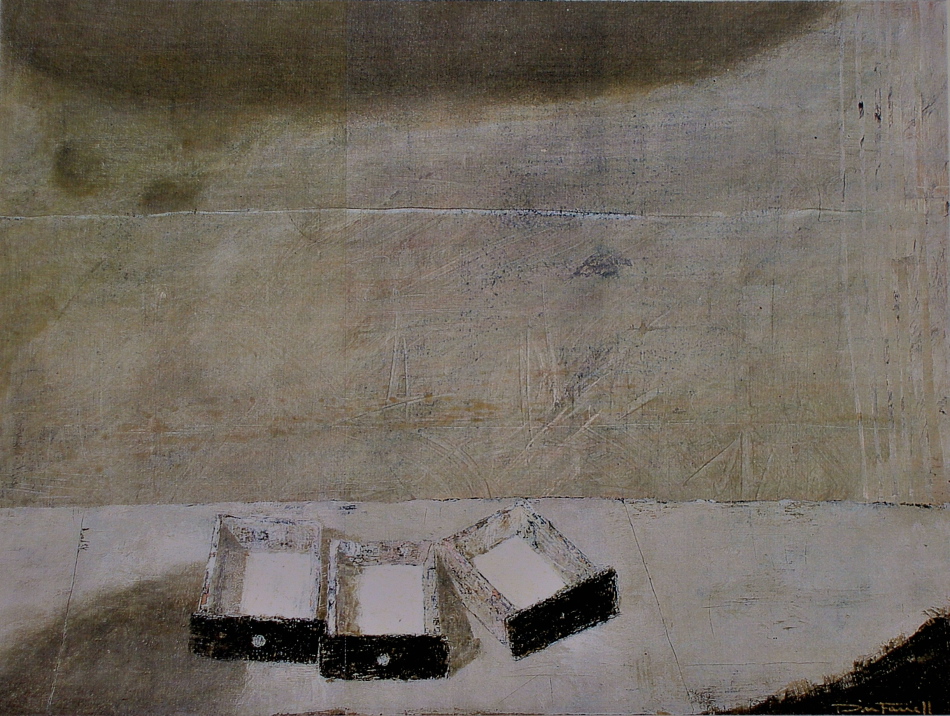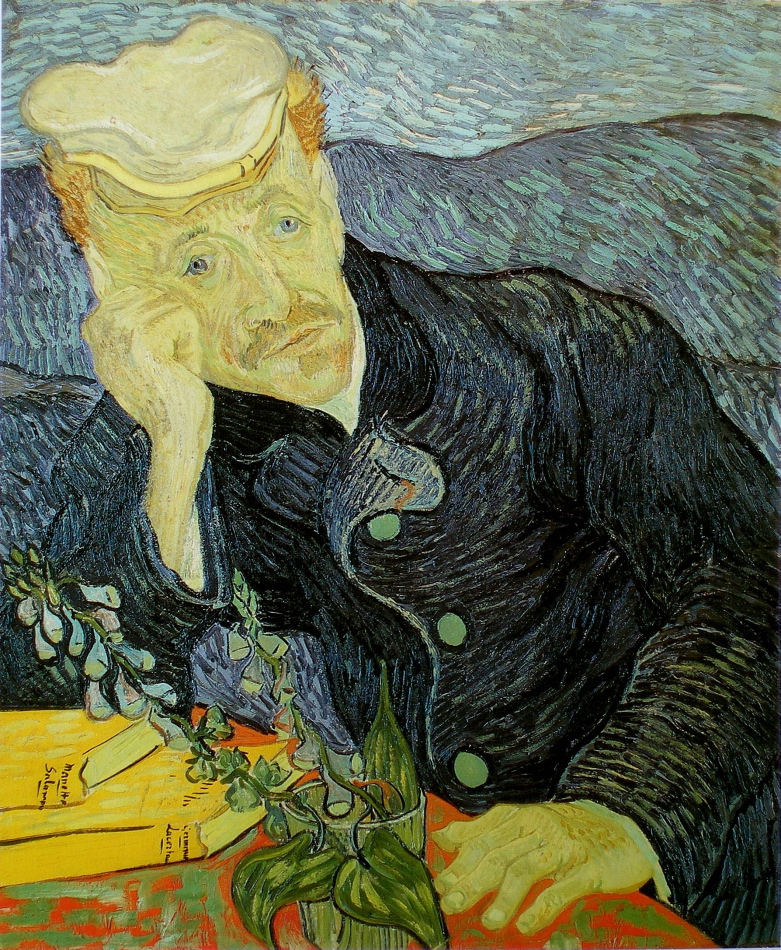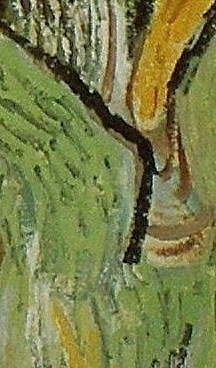The arrangement of the drawers is the key for the rest of the composition. I decided to supported the sweeping movement of the drawer faces with a curve in the table front at the bottom right, which felt very rhythmic. And to complete the harmony I provided a shadow at the top, echoing the movement of the drawers. Do you feel the rhythm?
I was pleased, but there was a problem with the viewers eye leaving the composition at the right. The stripes provided a solution, not only for containment but also a lovely pause (the small black marks in the stripes) appeared.
I was now pleased with the movement to the right, and instinctively knew the need to return the viewer to the left. After several attempts I finally arrived at a solution that not only balanced the composition, but also rhythmically integrated the drawers and the background. I added those two dark circular shadows at the upper left and then provided a harmony by painting knobs on just two of the drawers.
I should also mention that the angle of the drawer, at the right, determined the location of the two shadows. Do you feel the connection?
I then painted the horizontal white line to support the table and a cast shadow at the bottom left which provides a lead into the painting.
I also assessed all the smudges, scratches and markings throughout the composition for indications of disharmony, which usually requires a few visits.
I find it is much more interesting to permit the composition to lead me rather than to force the preconceived detail to dictate.




